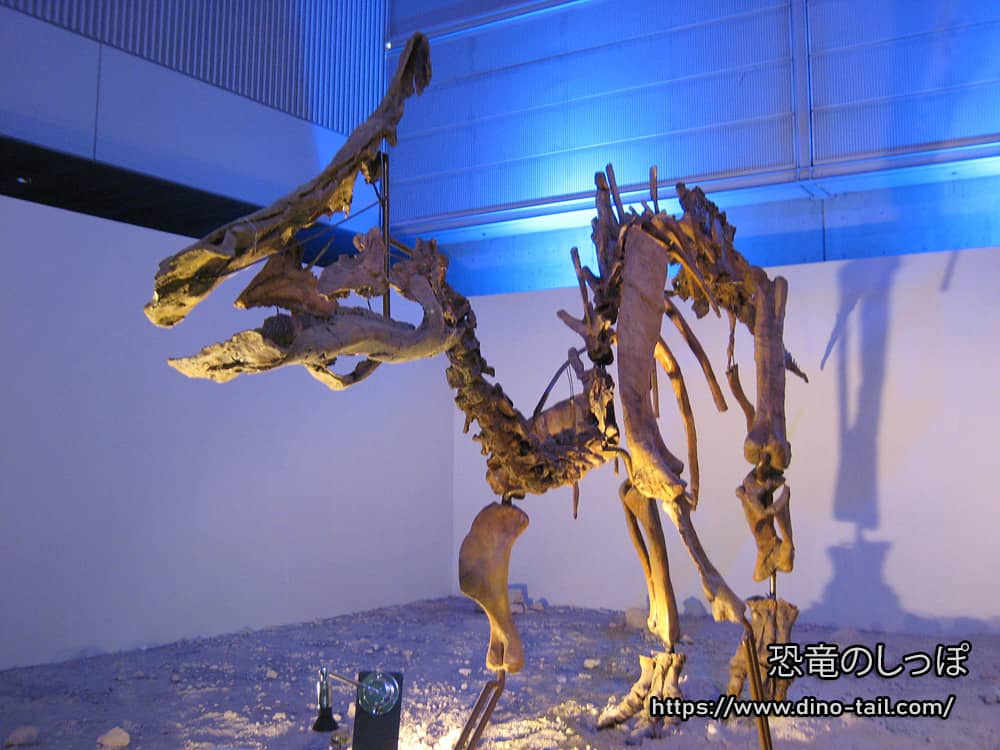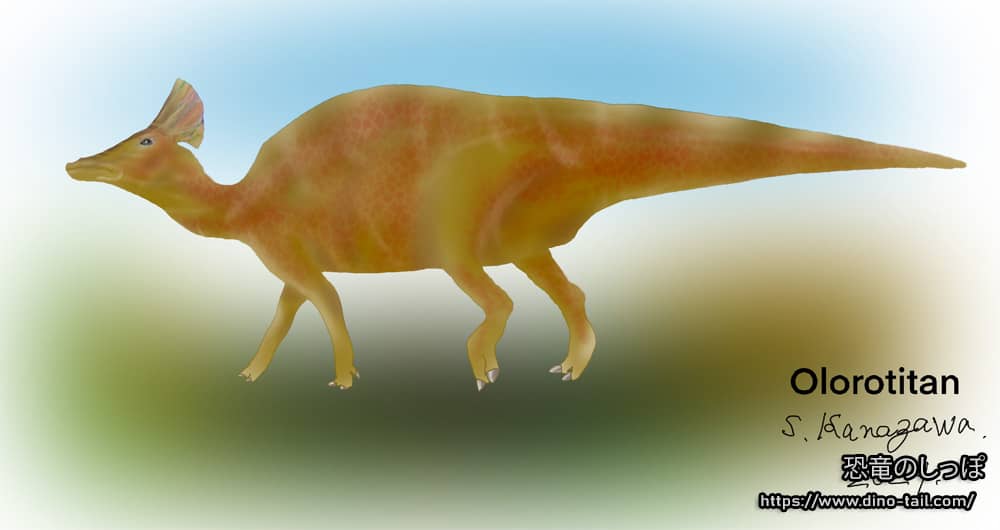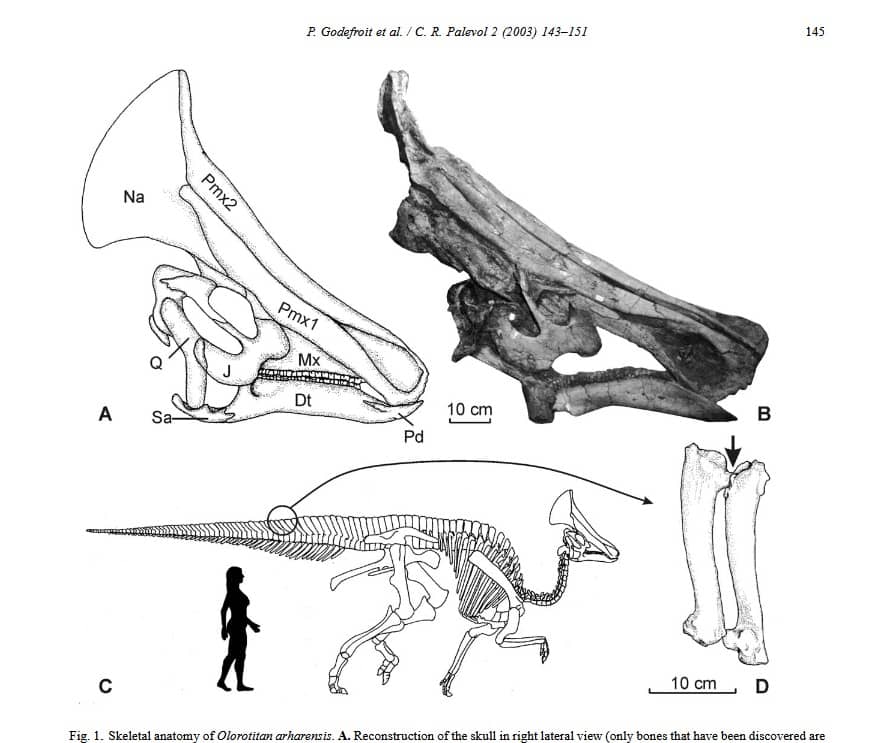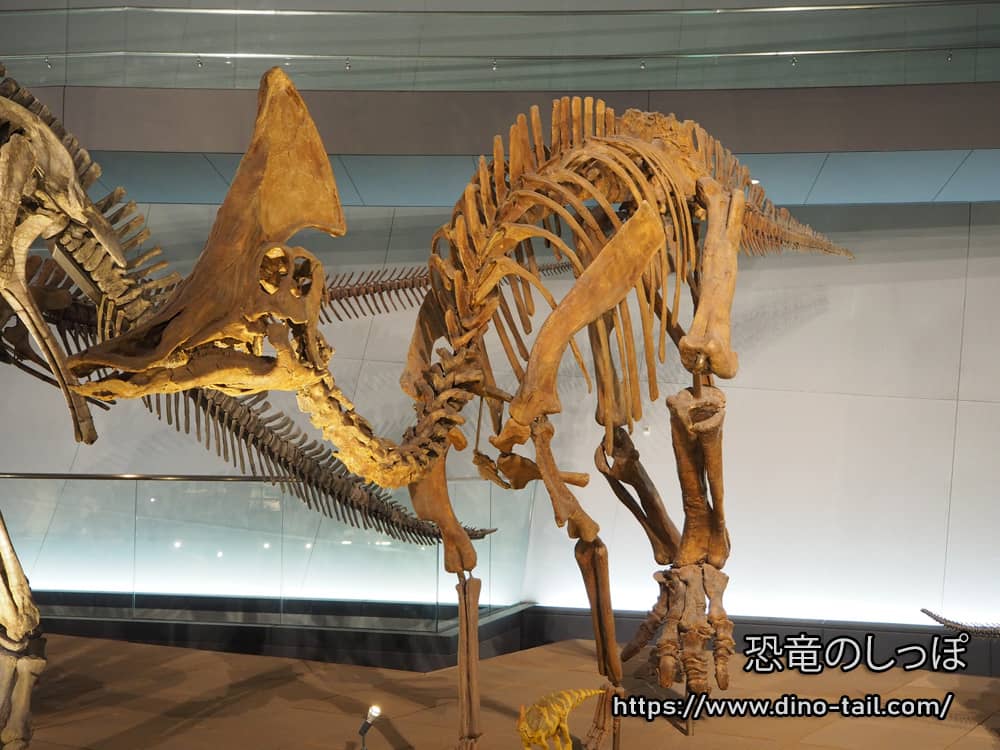About Olorotitan
| Scientific Name (Genus) | Olorotitan |
| Meaning of Name |
Giant swan
olor (swan) [Latin] - Titan (giant) [Greek] |
| Classification | Ornithischia, Ornithopoda (Hadrosauridae, Lambeosaurinae) |
| Total Length | Approx. 8.1m |
| Diet | Herbivorous |
| Period | Late Cretaceous |
| Species | Olorotitan arharensis |
| Year of Paper Publication | 2003 |
| Description Paper |
A remarkable hollow-crested hadrosaur from Russia: an Asian origin for lambeosaurines.
Comptes Rendus Palevol 2 (2): 143-151. by Godefroit, Pascal; Bolotsky, Yuri; Alifanov, Vladimir, 2003. |
Features

The most distinctive feature of Olorotitan is the fan-shaped crest on its head that points backward. It was a large hadrosaurid, reaching a length of 8 meters and a weight of 3.4 tons, and had 18 cervical vertebrae (neck bones), three more than other hadrosaurids. The genus name of the long-necked Olorotitan means 'giant swan.'
The inside of the crest was a large hollow space connected to the nasal cavity. It seems to have served to resonate vocalizations.
Olorotitan lived at the very end of the Cretaceous period, about 66 million years ago. This means it was one of the last generation of lambeosaurines on Earth , thriving in Asia right before the great extinction event caused by a giant meteorite impact. They were among the last survivors of the age of dinosaurs.
Phylogenetic analysis has shown that it is closely related to Corythosaurus and Hypacrosaurus, which are found in North America.

Fossil Discovery and Description Paper

Source: A remarkable hollow-crested hadrosaur from Russia: an Asian origin for lambeosaurines.
Comptes Rendus Palevol 2 (2): 143-151.
by Godefroit, Pascal; Bolotsky, Yuri; Alifanov, Vladimir, 2003.
The fossils of Olorotitan were discovered between 1999 and 2001 in a place called Kundur in the Amur Region of the Russian Far East. This site is a 'bonebed' (a layer where fossils are densely packed), believed to have been formed when the creatures living there were instantly buried alive by a sudden flood or debris flow, and is also known as the ' Dinosaur Pompeii .'
Thanks to this tragic event, the Olorotitan fossil was discovered as a miraculously well-preserved complete skeleton , with almost all the bones from the skull to the tip of the tail still articulated. This is the most complete lambeosaurine fossil found outside of North America.
In 2003, based on this magnificent specimen, Olorotitan arharensis was described by Dr. Pascal Godefroit and his colleagues.
The scientific importance of the discovery of Olorotitan lies in the fact that it significantly rewrote the evolutionary history of the Lambeosaurinae, which was thought to have originated on the North American continent. The discovery of a species with such advanced features in Asia provided strong evidence that the Lambeosaurinae not only originated in North America but also diversified and evolved independently in Asia . The title of the description paper also mentions 'an Asian origin for lambeosaurines.'

